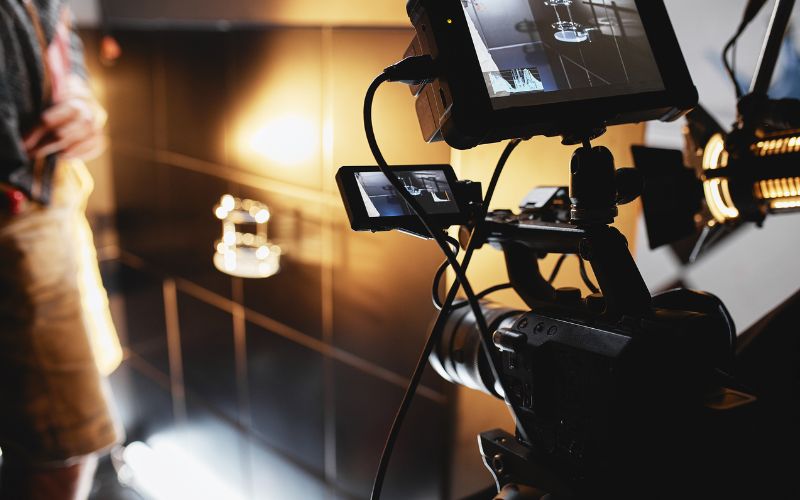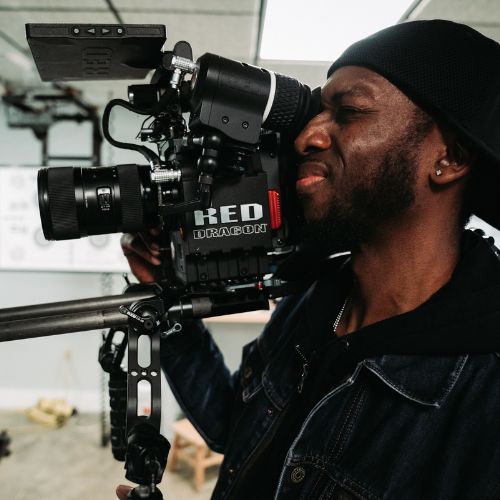
The Role of Lighting In Video Production
Video production is a complex process that involves multiple aspects of filmmaking, such as camera work, sound recording, and lighting. Lighting is one of the essential elements of video production, as it sets the mood and atmosphere of the scene and influences the audience’s emotions and perceptions. In this blog, we will explore the role of lighting in video production and its impact on the overall quality of the final product.
Lighting in Video Production
Lighting is the process of manipulating the amount, color, and direction of light to achieve a specific effect in a scene. In video production, lighting serves several functions, such as:
Creating mood and atmosphere: Lighting can be used to create a specific mood or atmosphere in a scene. For example, bright, warm lighting can create a happy, cheerful mood, while dark, cool lighting can create a mysterious, suspenseful atmosphere.
Highlighting the subject: Lighting can be used to draw attention to the subject of the scene. This is achieved by creating a contrast between the subject and the background, using different intensities and angles of light.
Creating depth: Lighting can be used to create a sense of depth in a scene by illuminating different areas of the set at different intensities.
Adding visual interest: Lighting can be used to add visual interest to a scene by creating shadows, reflections, and patterns.
Creating a sense of time: Lighting can be used to create a sense of time in a scene by mimicking natural lighting conditions, such as the time of day or the weather.
Types of Lighting in Video Production
There are three main types of lighting used in video production:
Key light: The key light is the primary source of light in a scene. It is positioned to illuminate the subject and create a contrast between the subject and the background.
Fill light: The fill light is used to fill in the shadows created by the key light. It is positioned opposite the key light and at a lower intensity.
Backlight: The backlight is used to separate the subject from the background and create a sense of depth. It is positioned behind the subject and at a higher intensity than the key light.
Other types of lighting used in video production include:
Background light: The background light is used to illuminate the background and create separation between the subject and the background.
Accent light: The accent light is used to highlight specific areas of the scene, such as props or textures.
Practical light: Practical light is a light source that appears in the scene, such as a lamp or a candle.
The Importance of Lighting in Video Production
Lighting is a critical element of video production, as it can make or break the overall quality of the final product. Here are some of the reasons why lighting is essential in video production:
Creates a Mood and Atmosphere
Lighting can be used to create a specific mood and atmosphere in a scene. For example, bright, warm lighting can create a happy, cheerful mood, while dark, cool lighting can create a mysterious, suspenseful atmosphere. By manipulating the amount, color, and direction of light, filmmakers can convey the intended emotion and enhance the audience’s experience.
Highlights the Subject
Lighting can be used to draw attention to the subject of the scene. By creating a contrast between the subject and the background, using different intensities and angles of light, filmmakers can ensure that the audience’s attention is focused on the intended subject. This is particularly important in close-up shots, where the subject’s facial expressions and emotions are critical to the story.
Creates Depth
Lighting can be used to create a sense of depth in a scene. By illuminating different areas of the set at different intensities, filmmakers can create the illusion of distance between the subject and the background, making the scene feel more immersive and realistic. This is especially important in larger, more complex scenes where multiple layers of depth need to be created.
Enhances Visual Interest
Lighting can be used to add visual interest to a scene. By creating shadows, reflections, and patterns, filmmakers can create a sense of texture and depth that enhances the overall quality of the shot. This is particularly important in establishing shots, where the audience needs to get a sense of the location and the environment.
Creates a Sense of Time
Lighting can be used to create a sense of time in a scene. By mimicking natural lighting conditions, such as the time of day or the weather, filmmakers can create a sense of realism and authenticity that enhances the audience’s experience. This is particularly important in scenes that take place outdoors or in large open spaces, where the lighting conditions can change quickly.
Tips for Effective Lighting in Video Production
To achieve effective lighting in video production, here are some tips that filmmakers should keep in mind:
Plan Ahead: Effective lighting requires careful planning and preparation. Filmmakers should have a clear understanding of the scene they are shooting, the mood and atmosphere they want to create, and the equipment and resources available to them.
Choose the Right Equipment: Filmmakers should choose lighting equipment that is appropriate for the scene they are shooting. This includes selecting the right type of light, the right intensity, and the right color temperature.
Consider the Camera Settings: Filmmakers should consider the camera settings when lighting a scene. This includes the ISO, aperture, and shutter speed, as well as the white balance and color profile.
Test and Adjust: Filmmakers should test and adjust the lighting before shooting. This includes testing the light’s position, intensity, and color temperature, and making adjustments as needed to achieve the desired effect.
Use Light Modifiers: Filmmakers can use light modifiers, such as diffusers, reflectors, and flags, to manipulate the light and create a more natural and realistic effect.
Conclusion
Lighting is an essential element of video production that can have a significant impact on the final product’s quality. By creating mood and atmosphere, highlighting the subject, creating depth, enhancing visual interest, and creating a sense of time, lighting plays a critical role in shaping the audience’s emotions and perception of the scene. By planning ahead, choosing the right equipment, considering the camera settings, testing and adjusting, and using light modifiers, filmmakers can achieve effective lighting and create a more immersive and engaging experience for their audience.
Related Blogs
Tips for Shooting High-Quality Videos With a Smartphone
Tips for Shooting High-Quality Videos With a Smartphone With advancements in technology, it is now possible to capture [...]
How To Create Engaging Content for Social Media Video Platforms
How To Create Engaging Content for Social Media Video Platforms Social media video platforms like TikTok, Instagram Reels, [...]
Benefits of Using ChatGPT For Video Production
Benefits of Using ChatGPT For Video Production As technology advances, video production has become increasingly accessible and popular. One [...]






